Class Solution
java.lang.Object
g1901_2000.s1914_cyclically_rotating_a_grid.Solution
1914 - Cyclically Rotating a Grid\.
Medium
You are given an `m x n` integer matrix `grid`, where `m` and `n` are both **even** integers, and an integer `k`.
The matrix is composed of several layers, which is shown in the below image, where each color is its own layer:
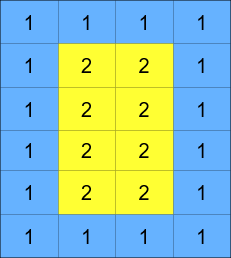
A cyclic rotation of the matrix is done by cyclically rotating **each layer** in the matrix. To cyclically rotate a layer once, each element in the layer will take the place of the adjacent element in the **counter-clockwise** direction. An example rotation is shown below:
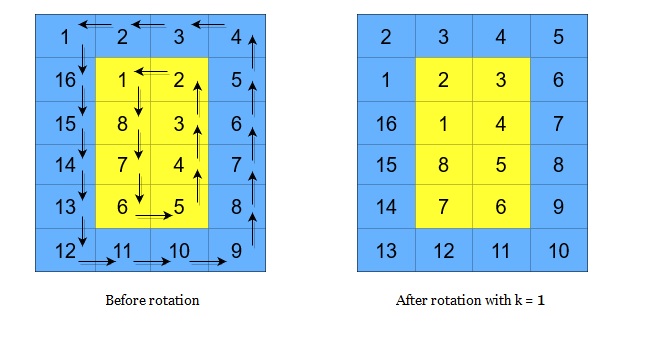
Return _the matrix after applying_ `k` _cyclic rotations to it_.
**Example 1:**
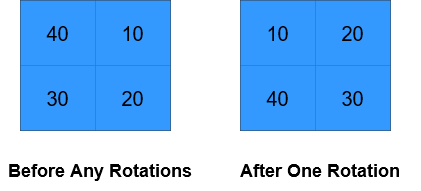
**Input:** grid = \[\[40,10],[30,20]], k = 1
**Output:** [[10,20],[40,30]]
**Explanation:** The figures above represent the grid at every state.
**Example 2:**
**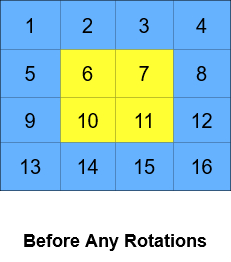** **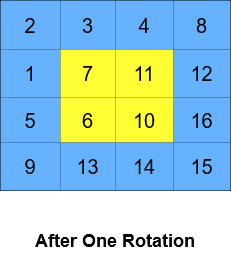** **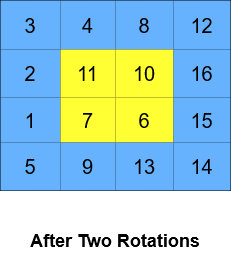**
**Input:** grid = \[\[1,2,3,4],[5,6,7,8],[9,10,11,12],[13,14,15,16]], k = 2
**Output:** [[3,4,8,12],[2,11,10,16],[1,7,6,15],[5,9,13,14]]
**Explanation:** The figures above represent the grid at every state.
**Constraints:**
* `m == grid.length`
* `n == grid[i].length`
* `2 <= m, n <= 50`
* Both `m` and `n` are **even** integers.
* `1 <= grid[i][j] <= 5000`
*
1 <= k <= 109-
Constructor Summary
Constructors -
Method Summary
-
Constructor Details
-
Solution
public Solution()
-
-
Method Details
-
rotateGrid
public int[][] rotateGrid(int[][] grid, int k)
-